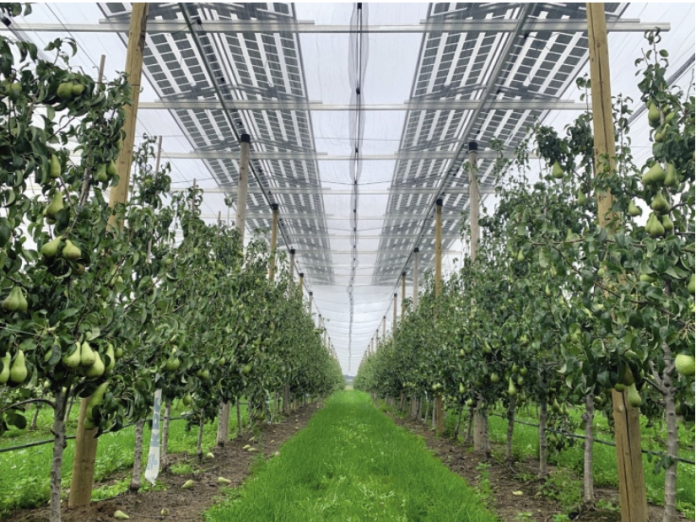This September, legendary broadcaster David Attenborough released the documentary, A life on our planet. In it, he said that preserving biodiversity is one of the key issues we face. At the same time, research published by the University of Oxford found emissions from the world’s food system – said to account for around 30% of total global emissions – could increase temperatures by 1.5°C, even if we “immediately” halted fossil fuel emissions.
These threats may appear detached from the solar industry. However, PV is not only uniquely positioned to address our addiction to fossil fuels. A growing body of evidence shows it could also prove key to solving biodiversity loss and intensive agriculture challenges, including deforestation, soil erosion, land conflicts, pesticides, drought, and desertification.
Discover our agri-PV coverage
Building PV for the future: Financiers and investors have always understood that PV power plants play a more prominent role than just generating profits – they also produce electricity without emitting carbon. Lately, the sector is discovering that PV can fulfill a much larger range of environmental functions – improving biodiversity, removing carbon from enriched soils, and producing food in an environmentally sustainable way.
Orchardvoltaics – it’s just ripe: How do you feed a growing population with limited agricultural space, and ensure that the global trend of smashed avocado toast lives on? In Israel, Doral Energy is facing this question head-on with its innovative agri-PV concept, ‘orchardvoltaics’, which purportedly boosts farmers’ profits, increases crop yields and helps realize ambitious renewable energy goals.
PV in the water-energy-food nexus: Sector coupling may be somewhat of a buzzword, but it also points to opportunities for PV beyond the power markets, which may quickly reach limitations during peak hours of irradiation. Combined energy, food, and clean water production present one such opportunity, with benefits for developers, utilities, and communities.
Solar’s flexibility can be agriculture’s gain: Both solar and the farming industry are beginning to see potential in the combined use of land for food production and energy generation. And as innovators begin to experiment with different forms, it’s becoming clear that in most cases it is solar that will have to bend to the needs of agriculture, and not the other way around, to ensure a positive outcome.
An inclusive, rural European Green Deal through agrisolar: Combinations of sustainable agriculture with solar PV systems have immense potential in the EU, writes Miguel Herrero, policy adviser at SolarPower Europe, and the coordinator of the organization’s agrisolar workstream. According to SolarPower Europe’s most recent policy briefing, if agrisolar is deployed on just 1% of arable land, it could deliver more than 700 GW of technical capacity, amounting to more than 25% of the EU’s current electricity consumption. If the EU taps this potential, it could lead the world in this efficient global solar PV innovation.
An endless appetite for PV: With a growing demand for healthy fruit and vegetables, both plastic and glass greenhouses are increasingly supplying Chinese tables. Rene Moerman, the founder of China-based Xilia, toured several sites where solar PV has been integrated into greenhouses.
Raspberry PV protects the crop and avoids waste: An agrivoltaic project in the Netherlands demonstrates the compatibility of solar PV power generation and raspberry cultivation. The solar roof protects the plants, saves the farmer’s work, and only has a minimal impact on the harvest.
Agrivoltaics: Where are we heading?: The complexity of agrivoltaics is not rocket science, but rather lies in the field’s various interdisciplinary challenges, says Max Trommsdorff, head of group agrivoltaics at Fraunhofer Institute for Solar Energy Systems ISE. Should agrivoltaics be deployed with interspace cropping, or should we use stilted PV systems that allow for cultivation below? And can the sector flourish without regulation?
PV for biodiversity: PV’s contribution to a cleaner future can go well beyond generating emissions-free energy, but maximizing the opportunity is not always straightforward. Ragna Schmidt-Haupt, a partner at Everoze and a board member at Skyray, argues that investors and lenders must start making decisions today to fulfill the required disclosure regulations and make sure their fleet has a positive impact on biodiversity. The key challenge is to weigh the techno-economic-ecological risks, opportunities, costs, and revenues.
Webinar: From sun to fork: How can circular agrivoltaics boost solar’s reputation and increase value creation for all?
Check out the coverage from our UP Initiative Q2 theme: Worker’s rights, on Dec. 28. In Q1 2022, meanwhile, we will be focusing on the rise of e-mobility and how it can complement the renewable energy transition. Specifically, we will examine the role electric vehicles, trains, and two- and three-wheelers can play in greening the electricity grid.






